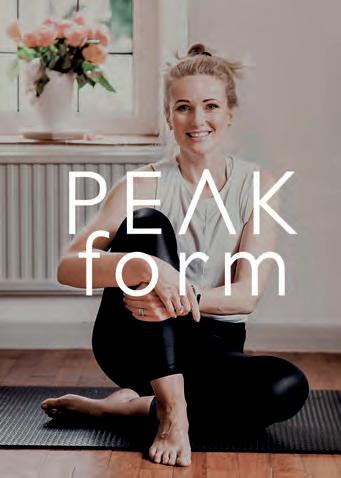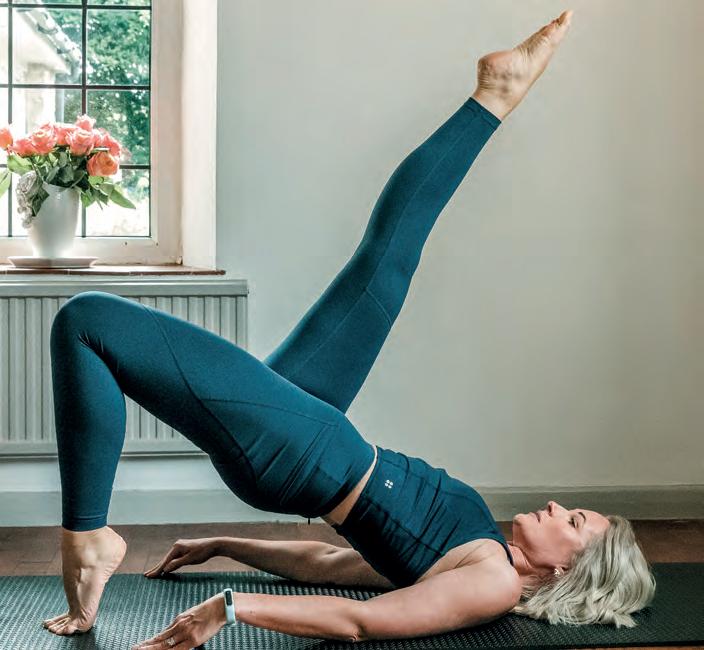
2 minute read
The Key Principles of Pilates and how they Benefit your Posture at the bench! By Helen Everatt
WHO IS JOSEPH PILATES?
Joseph Pilates was born in Düsseldorf, Germany in 1883. He moved to England in 1912 where he taught fitness and martial arts during World War 1. He returned to Germany in 1919 to work with Rudolph Van Laban who introduced him to dance. In 1926 Joseph Pilates moved to New York, United States, where he met his wife, Clara. Together they opened their studio on 8th Avenue, just around the corner from the New York School of Ballet.
Advertisement
Here dancers came to Pilates for advice on conditioning exercises and techniques to overcome their dancing injuries. Pilates believed that his work was 50 years ahead of its time and could see that modern lifestyle issues of poor posture and inefficient breathing patterns were factors that impaired people’s health. He believed that his approach was the right balance between physical intervention and mental training.
Joseph Pilates’ Contrology Programme aimed to develop the complete co-ordination of mind, body and spirit to promote muscular power, suppleness, good posture and endurance, which helped his clients alleviate their symptoms of pain, focussing on the conscious elements of movement whilst relaxing non active muscles, therefore alleviating unnecessary muscle tension.

IS CONTROLOGY RELEVANT TODAY? CAN PILATES BENEFIT DENTAL TECHNICIANS?
The original Pilates exercises emphasised the conscious element of movement and focused on the relaxation of non-active muscles, alleviating any unnecessary muscle tension. This has evolved into exercises focusing on postural symmetry, breath control, abdominal strength, spine, pelvis and shoulder stabilisation, muscle flexibility, joint mobility and strengthening through the complete range of motion of all joints. This evolution is partly because of advances in knowledge, specifically anatomy, physiology, kinesiology, and biomechanics, and because Joseph Pilates neglected to publish information about his method.
The key principles of Pilates and how they benefit your posture at the bench!
By Helen Everatt
Pilates is based on the original ideas of Joseph Pilates, it was originally called “contrology”
THE 6 FUNDAMENTAL PRINCIPALS OF THE ORIGINAL PILATES METHOD REMAIN TRUE TO THIS DAY, THEY ARE:
1) Breathing 2) Concentration 3) Control 4) Centring 5) Precision 6) Flow
Over the years Joseph Pilates work has evolved into a more contemporary and scientifically sound approach to exercise and training. If you attend a Pilates class today, you will be taught modifications and adaptations of many of Joseph Pilates original exercises.
Perhaps you feel you spend a lot of your day in the laboratory leaning over a work bench, or in an office sat at a computer or driving hunched over a steering wheel? This can lead to a pain, headaches, and a kyphotic posture, where shoulders appear rounded, pectoral muscles tight, back and neck muscles long and weak.
In Pilates we address all postures and perform exercises to realign and correct any deviations, thus addressing pain, stiffness, and weaknesses. However your posture may appear at the start the class, you will leave taller, straighter, stronger and more supple, and be given the tools (exercises) to maintain this corrected alignment and posture both at work and play.
For more information on Pilates, nutrition or fitness see my website www.peak-form.co.uk or follow me on Instagram @peak.form I would love to hear from you!










